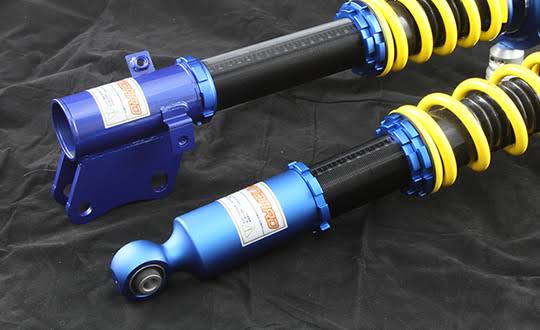Complete Guide to Car Shock Absorbers
Shock absorbers are a vital part of any vehicle, yet they are often overlooked during regular maintenance. They play a major role in ensuring your car remains stable, comfortable, and safe while driving.
In this guide, we will explore what shock absorbers do, how to recognize signs of wear, and how to choose the right replacement when the time comes.
What Are Shock Absorbers?
Shock absorbers are mechanical devices designed to control the movement of your car’s suspension. When a vehicle travels over bumps or uneven surfaces, the springs compress and expand to absorb the impact. Shock absorbers manage these movements by dampening the energy, allowing the car to maintain better contact with the road.
Without properly functioning shocks, a vehicle would bounce excessively after every dip or bump, leading to poor control and an uncomfortable ride.
Why Shock Absorbers Matter
Shock absorbers are not just about ride comfort. They also play a critical role in:
- Vehicle Control: Helping maintain tire contact with the road surface during braking, cornering, and acceleration.
- Braking Efficiency: Assisting in reducing stopping distances by improving tire grip.
- Handling Stability: Minimizing body roll when turning and helping the vehicle stay balanced during sudden maneuvers.
- Passenger Comfort: Absorbing vibrations and jolts caused by road imperfections.
- Component Protection: Reducing wear and tear on tires, steering components, and other suspension parts.
Signs Your Shock Absorbers May Need Replacement
Shock absorbers typically wear down gradually. Recognizing early signs of failure can help prevent more serious issues. Watch for the following indicators:
- Excessive bouncing after driving over bumps
- Nose-diving when applying brakes
- Increased body roll when cornering
- Longer stopping distances
- Visible leaking fluid around the shocks
- Unusual noises from the suspension area
- Irregular tire wear patterns
If you notice any of these signs, it is recommended to have a professional inspect your vehicle’s suspension system.
How Long Do Shock Absorbers Last?
On average, shock absorbers can last between 50,000 and 100,000 miles.
Their lifespan depends on factors such as:
- Driving conditions: Rough roads, frequent potholes, and unpaved surfaces can shorten shock life.
- Vehicle load: Carrying heavy cargo or towing can put additional stress on shocks.
- Driving habits: Aggressive driving may lead to faster suspension wear.
Regular inspections are important, especially if you often drive in challenging conditions.
Types of Shock Absorbers
Choosing the correct type of shock absorber depends on the vehicle and how it is used. The most common types include:
How to Choose the Right Shock Absorbers
When replacing shock absorbers, consider:
- Driving environment: City streets, highways, or off-road trails each require different shock characteristics.
- Vehicle size and weight: Larger vehicles may require heavy-duty shocks.
- Performance goals: Some shocks prioritize comfort, while others are designed for sharper handling.
- Budget: High-quality shocks offer better performance and longevity, but costs vary.
Why Driving with Bad Shock Absorbers is Dangerous
Worn or damaged shock absorbers can seriously affect your vehicle’s safety and performance. They can reduce braking efficiency, impair handling, and raise the risk of accidents — especially in tough conditions like rain, snow, or rough roads. Bad shocks also lead to faster tire wear and added stress on other suspension parts.
Here’s a closer look at the dangers:
Safety Risks:
- Reduced Braking Efficiency:
Worn shocks can significantly increase your stopping distance, making it harder to stop quickly in emergencies. - Poor Handling:
With bad shocks, maintaining control becomes difficult, especially when cornering or driving on uneven surfaces. - Higher Risk of Skidding:
Poor traction caused by failing shocks increases the likelihood of skidding on wet or slippery roads. - Unstable Ride:
Your car may bounce, sway, or feel unstable in crosswinds — signs of compromised control, according to Midas.
Other Problems:
- Uneven Tire Wear:
Bad shocks cause tires to wear unevenly, leading to premature replacements. - Extra Strain on Suspension Parts:
Worn shocks can overstress components like ball joints and tie rods, causing them to wear out faster, as noted by Monroe. - Reduced Ride Comfort:
You’ll experience a rougher, more uncomfortable ride with increased bouncing and vibrations.
Common Signs of Bad Shocks:
- Excessive bouncing or swaying
- Uneven tire wear
- Increased stopping distance
- Leaking fluid around the shocks or struts
- Clunking or unusual noises
- Feeling of instability, especially over rough surfaces.
Important: Always replace shocks in pairs (both front or both rear) to maintain proper balance and handling.
Maintaining Your Shock Absorbers
To extend the life of your shock absorbers:
- Inspect regularly for visible damage, leaks, or corrosion.
- Watch your tire wear patterns for early signs of suspension problems.
- Drive carefully over rough roads and avoid overloading your vehicle.
- Schedule professional checks during major service appointments.
Proper maintenance ensures a smoother ride and better overall vehicle performance.
Frequently Asked Questions
Can I continue driving with worn shock absorbers?
While you can technically drive, it is unsafe to do so. Worn shocks compromise handling and braking, increasing the risk of accidents.
Should I replace all shocks at once?
Replacing shocks in pairs (both front or both rear) is recommended. Replacing all four at once is ideal for consistent ride quality.
Are shocks and struts the same?
No. While both manage suspension motion, struts also support the vehicle’s structure, whereas shocks are purely dampers.
Final Thoughts
Shock absorbers are essential for safe, smooth, and efficient driving. Paying attention to their condition and addressing problems early helps protect your vehicle, improves safety, and ensures a more comfortable ride.
Regular inspections, timely replacements, and choosing the right shocks based on your driving needs will help you get the best performance out of your vehicle for years to come.



